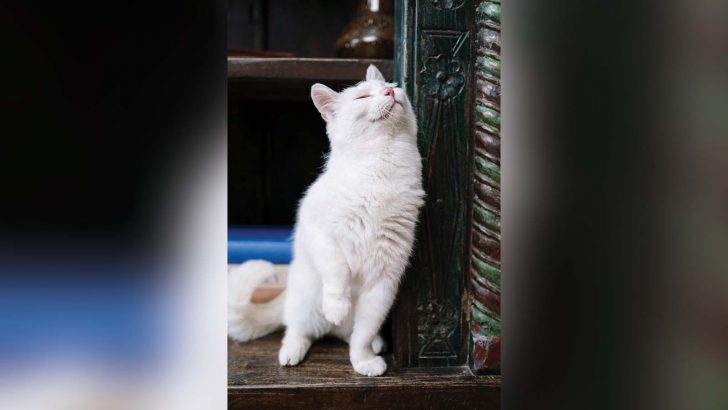Notebook
Probably the best-loved poem written in the Irish language begins with the words ‘Messe ocus Pangur Bán’. In Robin Flower’s translation, the first stanza reads: “I and Pangur Bán my cat,/‘Tis a like task we are at:/Hunting mice is his delight,/Hunting words I sit all night.”
It was probably written at some point in the ninth Century near Reichenau in Austria, a monastic peninsula jutting out into Lake Constance. The Irish monk who wrote it was a scholar: he “hunts words”, he “sits with book and pen”, and by his study seeks to “turn darkness into light”. In all of this work Pangur is a pleasant companion, at work alongside him. “So in peace our task we ply,/Pangur Bán, my cat, and I;/In our arts we find our bliss,/I have mine and he has his.”
Online
I’ve known and loved this poem for years, but I only learned recently that the manuscript which contains the poem is available to view online. It’s a fascinating little book, and reveals so much about the world of its author. It contains a few other poems written in Irish, for example, including a poem praising Áed, eigth-century king of Leinster, as “the trunk of a great tree”.
Apart from these poems, the rest of the manuscript is aimed at the classroom, and suggests that, like so many other Irish monks on the continent, Pangur Bán’s owner was a teacher of the liberal arts. We find there a brief life of the Roman poet, Virgil, for example, as well as notes on his great poem, the Aeneid.
There are bits of Greek too: grammatical paradigms and lists of vocabulary. I could make out their words like anastasis (resurrection), pistis (faith), gnosis (knowledge), and agape (charity). All very useful vocabulary for reading the New Testament!
Anonymous
Astronomy is always useful in monastic communities, and our anonymous Irish monks had a finger in that pie too. On the page facing his famous poem, there’s an astronomical table. I sent it on to Seb Falk, expert in medieval astronomy and author of The Light Ages, and he identified it as a lunar table, showing the times of the year at which the moon is in a particular zone of the night sky.
My very favourite part of the manuscript, though, is a long list of Latin hymns, probably used as an aid in teaching Latin grammar. What delights me in this list is the fact that in our community in St Saviour’s, Dublin, we still sing many of these hymns today. On Sunday evenings, for example, we begin Vespers by singing “Lucis creator optime”, honouring the Lord as creator of light. And in the Reichenau manuscript are found the very words of that hymn, including a note explaining that this hymn is sung “at Vespers on Sunday”.
Isn’t that extraordinary? When we Dominican friars sing these words of praise on Sunday evenings we’re taking our place in a relay of praise that stretches back 1200 years and more. When we sing this hymn we’re singing words that were sung in Reichenau in the ninth Century, words that the keen ears of Pangur Bán himself would surely have heard as he paced the chapel, hunting for mice.
The Welsh roots of Pangur the cat
Pangur is not a very Irish-sounding name, and in the 1930s a Welsh scholar by the name of W.J. Gruffydd made an intriguing suggestion. Perhaps ‘Pangur’ is an older form of the modern Welsh word ‘pannwr’, meaning a fuller (someone who bleaches clothes), which would be a very fitting name for a bright white cat. This idea, largely accepted by scholars, means that the cat received its name not from Irish-speakers, but from Welsh-speakers. It’s likely, then, that Pangur was picked up in Wales by his Irish owner when he was on his way from Ireland to the continent. We know that other monks passed through Wales on their way to the continent, so it’s perfectly plausible. I find it rather lovely to think of this wandering monk, alone in Wales, finding companionship in a pet.
Still singing about Pangur Bán
Many modern poets have had a go at translating this ancient poem, including Auden and Heaney, and it was even set to music by the great American composer, Samuel Barber, as part of his ‘Hermit Songs’ cycle. It was premiered in 1953 at the Library of Congress. Just imagine we could travel back in time and tell the anonymous poet that 1200 years later people would still be singing about his cat in a mysterious land across the wild Atlantic…



